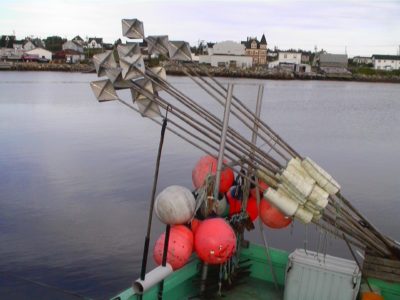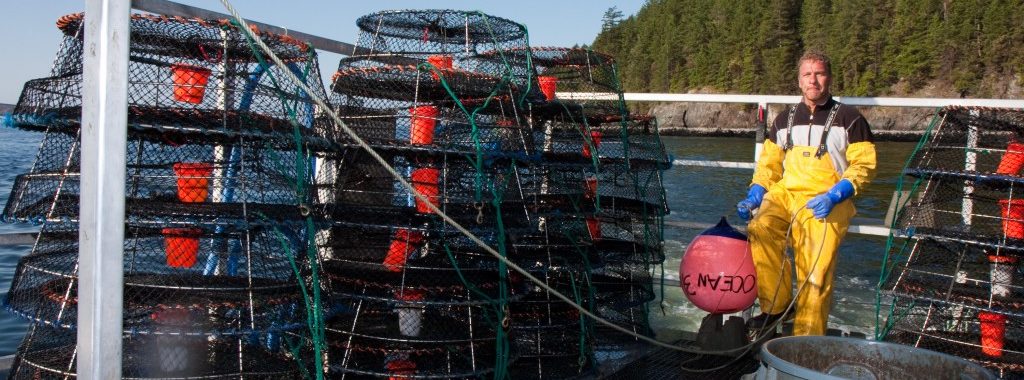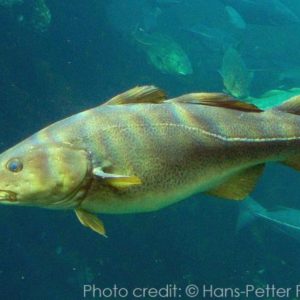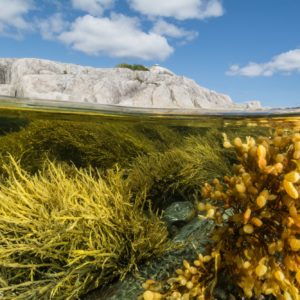Fishing Gear Types
Different fishing gear types have different impacts on bycatch, habitat and the rate at which overfishing occurs.
Different fish species live in different areas of the water column (e.g. surface, mid-water, bottom dwelling) and behave in various ways. As a result, the gear used to catch fish needs to be specially designed/suited for each target species.
The Challenge
Different gear types can have varied impacts depending on their design, where they are used and what they are catching. This gear variance is why the same species may have different sustainability rankings or eco-certifications, depending on how it was caught. Likewise, different species caught by the same gear type can have different sustainability concerns.

The Solution
Fisheries should use gear that minimizes unwanted impacts on the target species and marine ecosystem. Some gear types with bycatch issues can be modified to minimize these impacts, by adding “escape zones” or excluder devices in nets, for example, to allow unwanted animals to escape. Another modification could be using traps with sunken (instead of floating) lines, to reduce marine mammal entanglements. Some gear types are inherently more selective, and have a lower impact, such as hook-and-line or diving for nearshore species.
A good example of how different gear can have a significant impact on bycatch is in the Atlantic Canadian swordfish fishery. Two gear types are used in the commercial fishery – longlines and harpoons. While the harpoon fishery has virtually no bycatch, since each swordfish is individually targeted, the longline fishery has been known to catch more bycatch – mainly turtles and sharks – than swordfish.
Harpoons
The harpoon fishery for swordfish is an example of a selective gear, with almost no bycatch

Fishing Gear Categories
Fishing gear can be divided into five main categories. The first three are most commonly used in Canada:
Nets come in many sizes and shapes. Some are used passively (fixed, allowing fish and other animals to swim into them), while others are used actively (mobile, dragged through the water). Common types of nets include trawl nets, dredges, beach seines, purse seines, gillnets and cast nets.
Trawls are towed nets that usually consist of a frame with a net bag attached that is pulled from a boat to collect fish and other marine life. Most trawls are dragged along ocean bottoms, but may also be used in mid-water to capture certain species. In Canada, trawls are mainly used to catch groundfish (e.g. Atlantic cod, rockfish, hake) and shrimp.
Dredges are shovel-like iron frames with fine nets attached. They rake the seabed to collect animals living at, or attached to, the bottom of the sea, such as scallops and clams.
Seine nets are bottom-weighted nets placed in the water surrounding a school of fish. A purse seine then draws the bottom of the net in, to capture all the fish inside. A danish seine funnels fish into the net by pulling it behind a boat. Seine nets catch about 50 per cent of commercial salmon in Canada, and are also used to catch herring.
Gillnets are a type of net that is placed in the water and catches fish that try to swim through the net, but instead get entangled (usually by their gills). The nets can be set in a line, a circle, drifting, or stationary. Gillnets catch about 25 per cent of commercial salmon in Canada, and are the main gear type used for Manitoba whitefish.
This gear is probably what is most typically associated with fishing. Hook and lines come in many different forms that include longlines, handlines, poles, and trolling lines. The hooks are often baited.
Longlines are the setting of long lines of baited hooks and are one of the most widely used forms of hook fishing. There are two types of longlining: surface (pelagic) longlining and bottom (demersal) longlining. Pelagic longlines are set to catch swordfish, tunas and other surface swimming fishes. Demersal longlines target species like halibut, rockfish, and cod.
Handlines, Poles, Jigs & Trolls are all one hook to one fishing line, and are shorter than longlines, so are in the water for a shorter amount of time. They can catch the same species as longlines.
Traps are enclosed spaces used to capture fish or invertebrates. Traps are usually used passively and may be baited to encourage the target species to enter. Common examples of traps include pots, stow or bag nets, and fixed traps. In Canada, traps are used to catch lobster, shrimp and sablefish.
These are gears that are usually hand-held and used to target individual fish or mammals. Grappling devices include harpoons, spears, and arrows. In Canada they are used to catch swordfish and salmon.
Stupefying devices stun fish using explosives or chemicals (e.g., dynamite or cyanide). There are no commercial fisheries in Canada using these capture techniques. The Food and Agriculture Organization’s Code of Conduct for Responsible Fisheries (Paragraph 8.4.2) specifically calls for the prohibition of “dynamiting, poisoning and other comparable destructive fishing practices”. Unfortunately, this practice is still common in certain parts of the world.

More information
- Eco-labels can be helpful when trying to choose more sustainable options, but it’s important to understand the differences between them because not all eco-labels are created equal.
- Traceability is critical for businesses to be confident in the seafood they sell and for consumers to have access to detailed information on seafood packs.
- A review of the impacts of all fishing gear types used in Canada, which provides data driven assessments on the relative impacts gear has on habitat and bycatch
- Fishing Gear Fact Sheets – Fisheries and Agriculture Organization of the United Nations
- Fishing Methods and Gear Types – MSC






